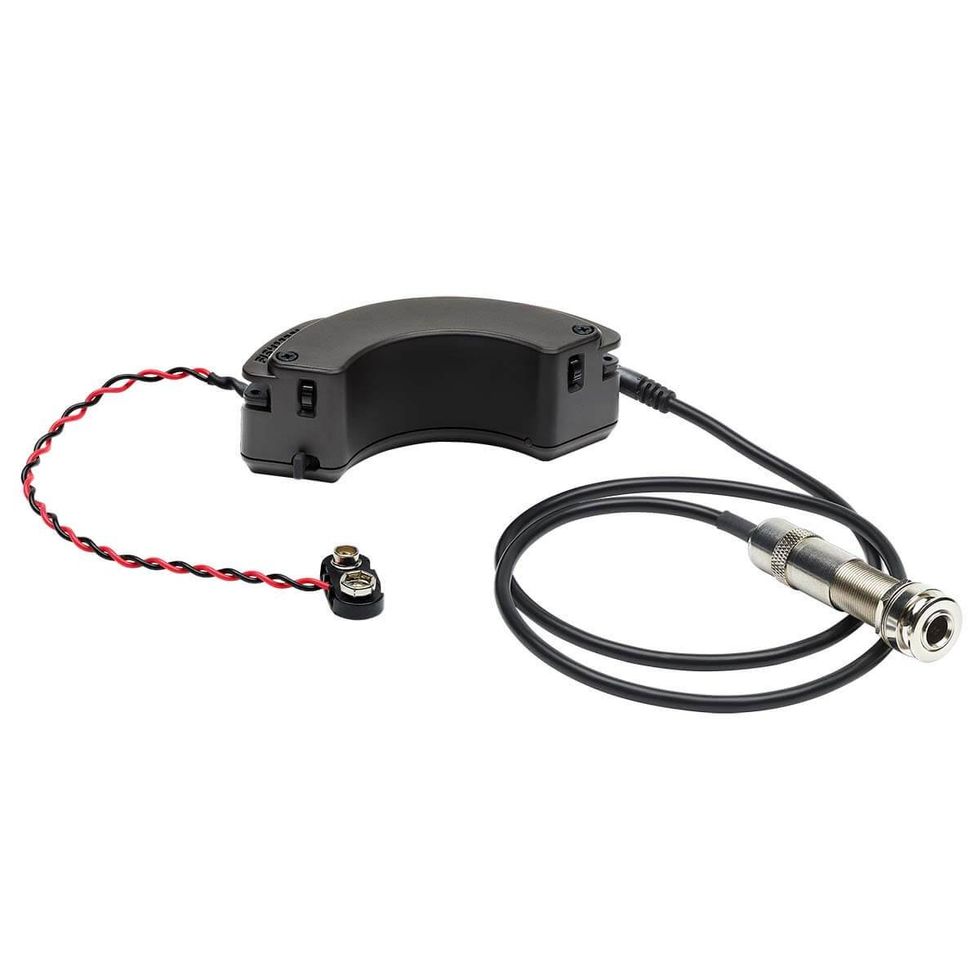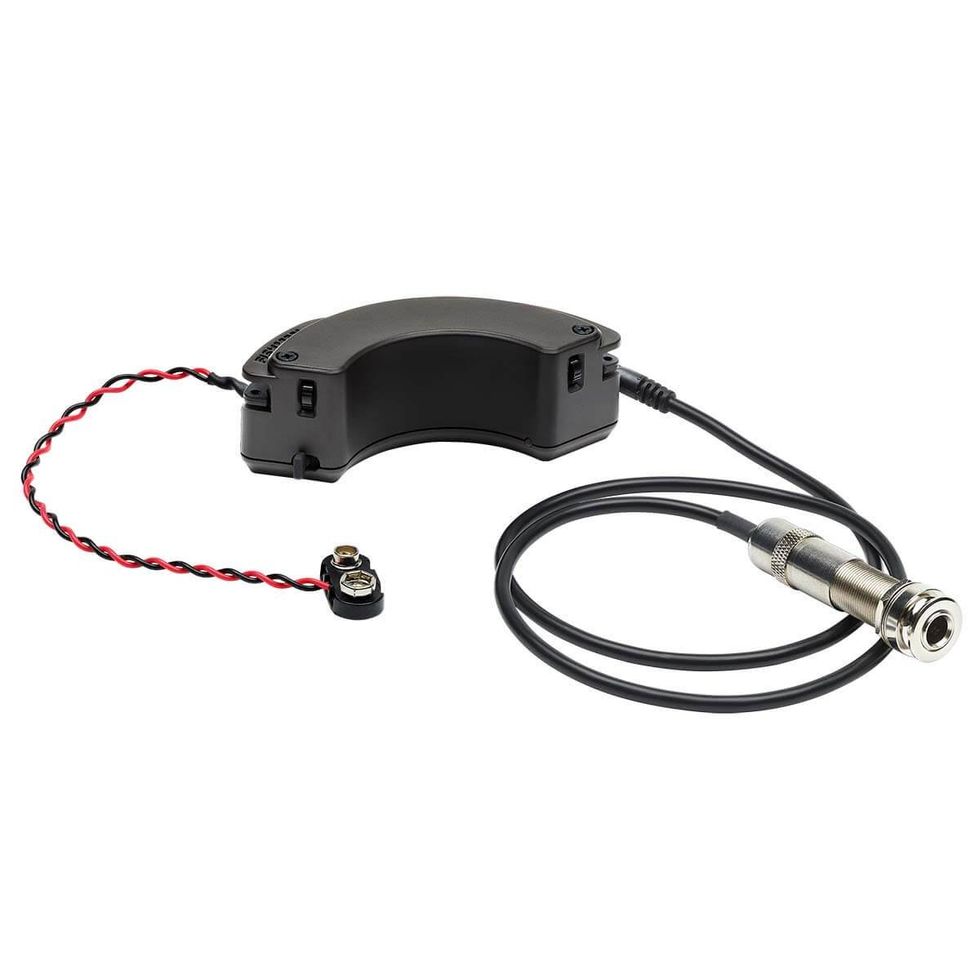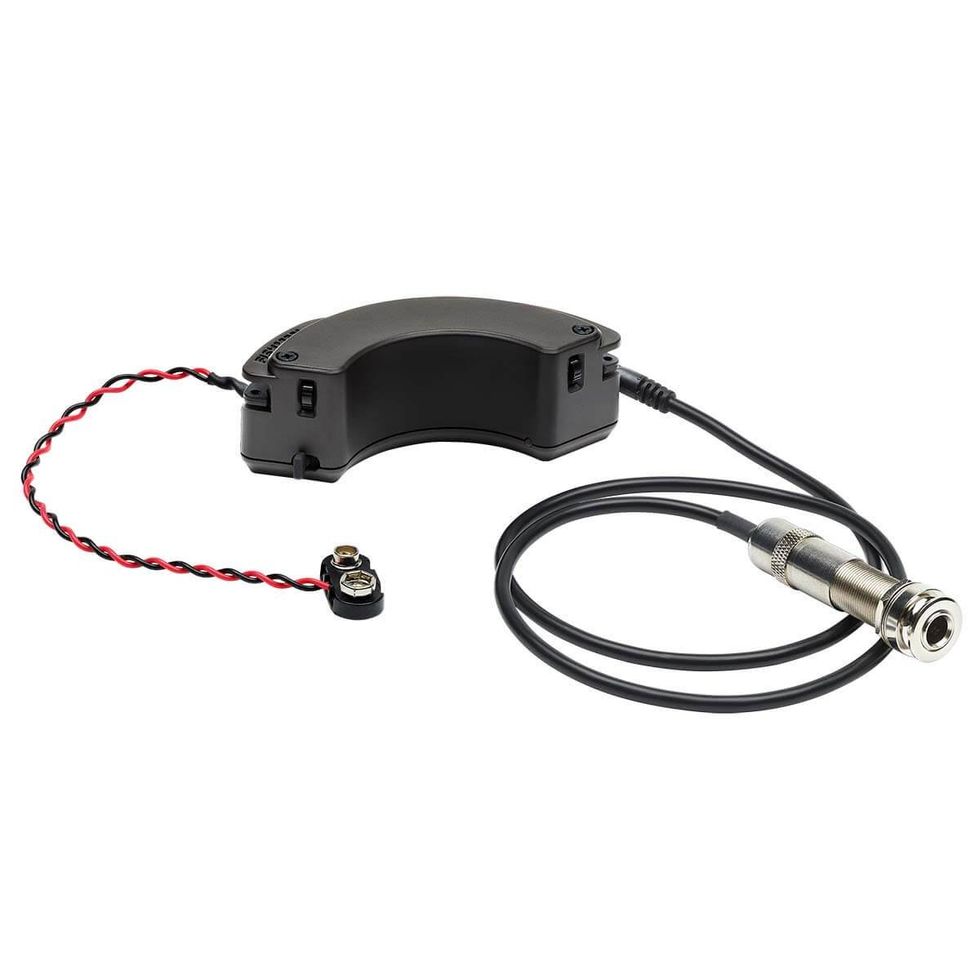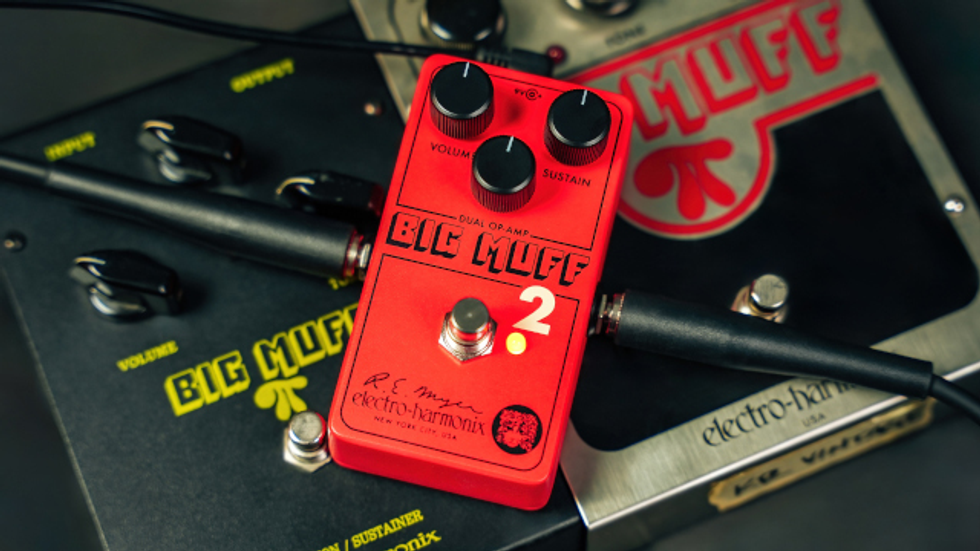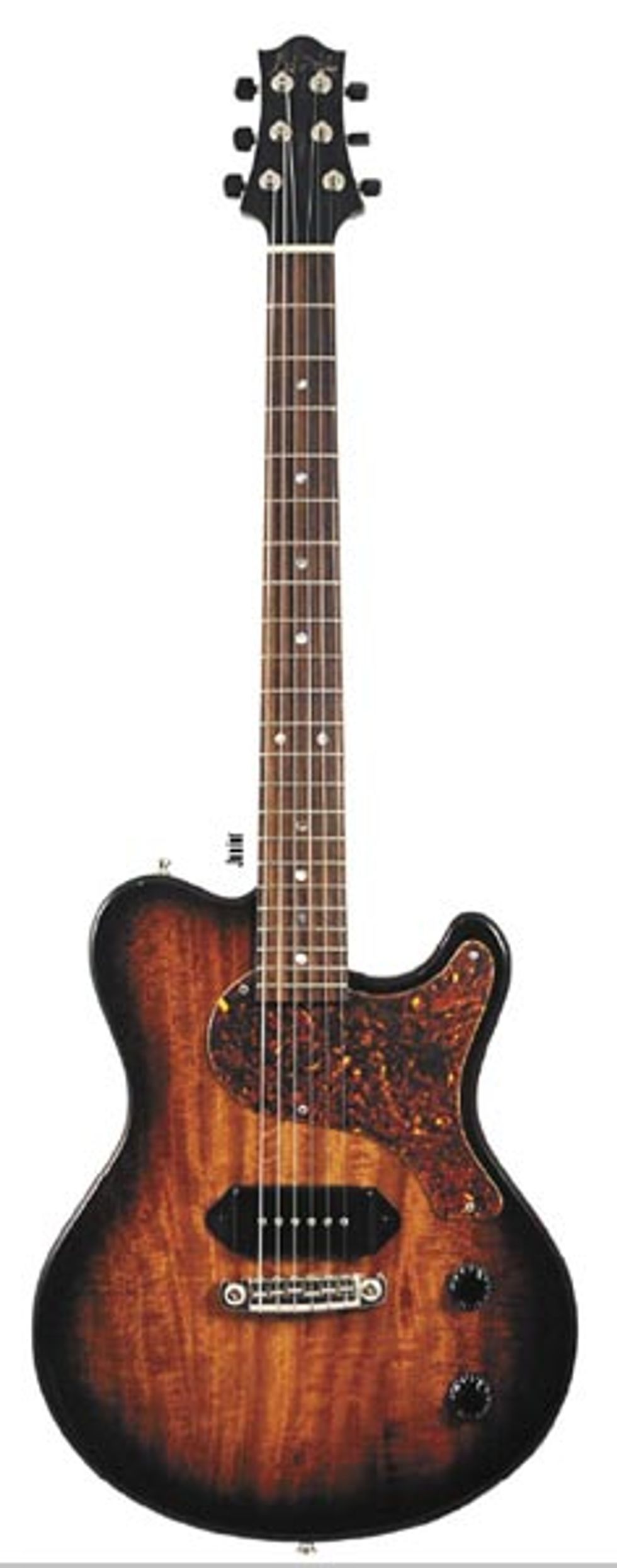 Nik Huber is well known in guitar circles as the guy responsible for lavish, no-expense-spared, set-neck and humbucker guitars, most notably the fifties meet aughts design of the Dolphin and the more traditional silhouette of the Orca. By using choice woods such as highly figured maple and Brazilian rosewood in addition to some insane inlay work that routinely features everything from abalone to precious metals, “subtle” is not a word typically associated with this German guitar maker. And yet, despite the figured mahogany bodies and abalone fingerboard dots, understated, and even subtle, are the first words that come to mind when searching for descriptions for the two rock n’ roll animals Nik sent us to check out – the Junior and the Special.
Nik Huber is well known in guitar circles as the guy responsible for lavish, no-expense-spared, set-neck and humbucker guitars, most notably the fifties meet aughts design of the Dolphin and the more traditional silhouette of the Orca. By using choice woods such as highly figured maple and Brazilian rosewood in addition to some insane inlay work that routinely features everything from abalone to precious metals, “subtle” is not a word typically associated with this German guitar maker. And yet, despite the figured mahogany bodies and abalone fingerboard dots, understated, and even subtle, are the first words that come to mind when searching for descriptions for the two rock n’ roll animals Nik sent us to check out – the Junior and the Special. Based on the earlier Junior, the Special is the newest addition to the Huber line, building on the success of its single-pickup predecessor. Our overseas package contained examples with matching, tasteful two-tone sunburst finishes. Picking up any Huber guitar will belie a strong, vintage Gibson influence, and the Junior and Special are no exceptions. The neck profiles of each are fat, Gibsonish Vs that wouldn’t be out of place on a late-fifties Gibson LP or Junior. The nottoo- tall medium jumbo frets also help impart a vintage feel to the respective instruments and should be comfortable to players from either Gibson or Fender camps. Oddly, the lack of a pickguard and restrained finish impart an almost plain-jane vibe to the Special. The Junior side-steps a similar fate by featuring just a touch more figuring in the mahogany and a handsome tortoiseshell-patterned pickguard to help break things up. Other shared features include an ebony headstock veneer, satin-finished ebony truss rod and control cavity covers, ebony-buttoned Schaller tuners, Brazilian rosewood fingerboard, unique cutaway neck/body joint and a wrap-around, aluminum bridge. Both sunburst finishes also include the ‘burst pattern continuing up the one-piece mahogany neck and headstock, while still allowing plenty of figure to shine through.
"...understated, and even subtle, are the first words that come to mind when searching for descriptions for the two rock n'' roll animals Nik sent us to check out — the Junior and the Special"
Starting off chronologically with the Junior, both the beefy neck and a slightly stiff feel are immediately noticeable. My cheapassed calipers indicate the guitar has a set of .010s, but they felt more like .011s. Also, Nik is shipping his guitars with Elixer strings, which along with the Fendery 25 1/2” scale-length could be contributing to the stiffness, although the Special felt looser. Again, while there are subtle tonal differences between scale lengths, for most pickers scale length equates to feel, and the mixing of traditional elements from both Fender and Gibson’s past should allow a larger cross section of players to feel at home on this guitar. The neck feel on this guitar, while perhaps one of the most subjective subjects in guitardom, is incredible. Before writing reviews, I jam through a familiar amp while recording off the cuff comments. When listening back to the Junior demo, I noticed that I dropped the F-bomb several times while describing how well this neck fit my hand.
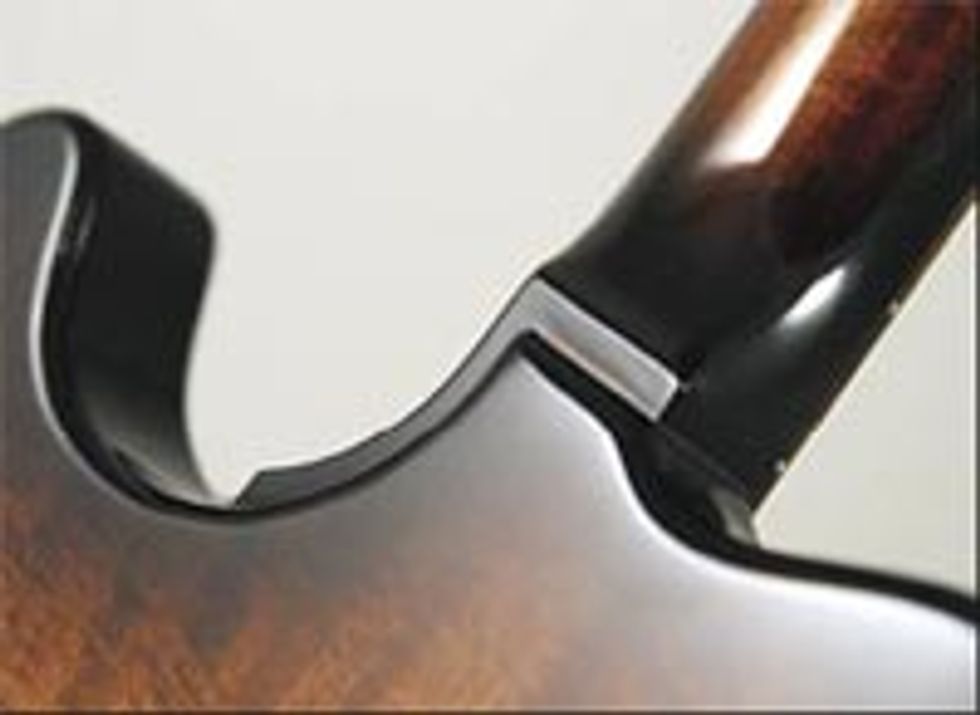 Playability is fine, but between the scalelength, strings and wrap-around bridge/ tailpiece combo, traditional Gibson fans may initially be put off. I would identify myself as a Fender fan and even I fought the stiffness a little at first. The setup is also partially responsible with the action setting at a little over 4/46” on the low E at the 17th fret and 3/64” at the high E. Relief was minimal, but along with the medium action allowed for big, bold sonically pure tones to flow easily even with clinically clean amp settings.
Playability is fine, but between the scalelength, strings and wrap-around bridge/ tailpiece combo, traditional Gibson fans may initially be put off. I would identify myself as a Fender fan and even I fought the stiffness a little at first. The setup is also partially responsible with the action setting at a little over 4/46” on the low E at the 17th fret and 3/64” at the high E. Relief was minimal, but along with the medium action allowed for big, bold sonically pure tones to flow easily even with clinically clean amp settings.  Special Licks
Special LicksPlugging in tells you just how reliant on the fundamental the Junior really is as well as how nice that purity of tone can be. The dog-eared, Huber and Harry Häussel-designed pickup is a phenomenal match for the wood and imparts a very rich, midrange-heavy P-90 tone. There is also a push-pull tone pot to tap the P-90. Harry and Nik have done an amazing job of finding just the right spot to take the stout single-coil from a thick vintage flavor to a thinner sound that falls somewhere between a lower-output P-90 and a fat, Broadcaster-like sound. When first looking over the specs and learning of the tapped P-90 feature on both instruments, I was initially skeptical of its usefulness. In practice, it is perhaps one of my favorite things about the both the Junior and Special after their respective feel and tone. I believe this feature succeeds precisely because it doesn’t try to make the guitar sound like something it isn’t. Rather, it adds a subtly different, closely related flavor to the mix. For the Junior, it allows – along with judicious use of the tone and volume controls – enough flexibility to clean up and rock some chicken picking while being able to get back to rock n’ roll territory easily enough; just push a button and roll both knobs back to ten. The nice thing is it imparts a vintage feel and sound the entire time, despite the high-end tone woods and “wrong” scale-length. I was able to cop fat Les Paul Junior sounds throughout the Huber’s range, easily approximating different P-90 outputs, bordering on the edge of thick, vintage Tele tones at its thinnest, coil-tapped settings.
The Special adds a neck position P-90 while losing the pickguard. While the pickguards on Gibson’s Les Paul Specials were perhaps some of the most obtrusive scratchplate designs ever, the lack of pickguard here can make things look awfully sparse – I tend to go back and forth on whether or not it was too much so. The guitar still exudes quality through its impeccable workmanship and flawless nitrocellulose finish, but even with the beautifully figured mahogany, the Special sometimes looks almost too austere for its asking price, although this is totally subjective. Again, as with the Junior, both of these instruments are treading new ground by offering subtly along with the Huber signature – my mind might just need some additional time to justify the two previously incongruous elements.
The neck on the Special doesn’t have the same pronounced V shape of the Junior, instead feeling more typical of the majority of vintage Pauls by offering a more subtle V shape that borders on an open C. The string tension seems lighter, although there is nothing indicating why this should be the case – both guitars are set up identically and share the same string gauge, at least according to my dodgy calipers.
Plugged in, the Special offers a slightly less focused bridge pickup sound – perhaps due to the neck pickup route – which may offer up even more usable tones for this exact reason. Whereas the Junior always retains focus, the Special plays around more with the mids and offers up some delightfully honky, horn-like textures that should be old friends to vintage Les Paul Junior and Special fans. The coil tapping is implemented in a push/push tone pot here and is a treat when used with the neck pickup. As was the case with the Junior, this feature walks the tightrope between thick Fender tones – in this case, the fattest Strat neck pickup you’ve ever heard – and traditional solidbody P-90 tones. In fact, it was the coil-tap in conjunction with the neck pickup on the Special that sold me on the feature – the tap really is in the perfect spot for the pickup’s voice.
The Final Mojo
Even though the Junior and the Special are intended as striped down rock n’ roll machines, their high-end pedigree is always evident. The quality is so apparent that the respective axes almost beg you to try to find a visual hiccup or flaw, yet none could be found. The subtlety of the design and delicious smell of the nitrocellulose lacquer draw you in, then the jewel-like fret work let you know Nik and company are just as serious with these “entry level” instruments as with the high-end solid-bodies for which they are best known. Price, which is always a consideration these days, is doubtfully going to work in the Huber’s favor due to the rising cost of materials and horrible exchange rates, but I get the feeling price isn’t a consideration for most Huber customers. If Huber’s Dolphin and Orca models are akin to BMW’s Alpina B7, the Junior and Special are like Porsche’s 911 GT3 RS – well-crafted and built for speed, and yet another in a long list of reasons to be upset if you’re not an independently wealthy guitar aficionado.
Buy if...
you appreciate life’s finer things and have a hankering for a nobullshit set neck
Skip if...
you’ve been saving up for a Billie Joe Signature Gibbo for quite a while and you still don’t have enough
Rating...
MSRP (Special) $3953 (Junior) $3357 - Nik Huber Guitars - nikhuber-guitars.com |
Our expert has stated their case, now we want to hear yours. Log on and share your comments and ratings.








![Rig Rundown: Russian Circles’ Mike Sullivan [2025]](https://www.premierguitar.com/media-library/youtube.jpg?id=62303631&width=1245&height=700&quality=70&coordinates=0%2C0%2C0%2C0)





